The Ballpark As a Civic Asset
The architectural and public virtues of baseball's grandest cathedrals
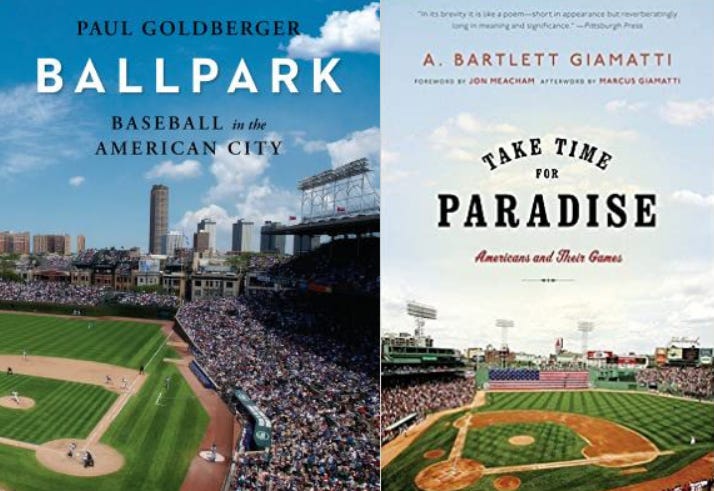
Sports Biblio Reader 10.25.20
The Imagination of Sports in Books, History, the Arts and Culture
Also In This Issue: Baseball Analytics Run Amok; When Women and Politics Took Over Baseball; Carlton Fisk; Doc Emrick Bids Farewell; Jim Thorpe; Army-Navy on Campus; A Grand Final Like No Other; England’s Northern League; Remembering Sid Hartman
Major League Baseball’s newest facility—the cavernous, nearly-empty Globe Life Park—is the site of the ongoing World Series.
Designated as a neutral site during a COVID-altered, crowd-limited season, the second version of a similarly named and conceived baseball park in the decidedly non-urban locale of Arlington, Texas, has connections with its city-centric, fan-friendly ancestors of the past century or so.
It’s the last stadium included in author Paul Goldberger’s “Ballpark: Baseball in the American City,” published in 2019 amid a wave of another major rethinking of big-league facilities that have adapted to their times.
As Goldberger, a former architecture critic for The New York Time and The New Yorker and now a contributing editor for Vanity Fair, notes throughout the book, the geography and customer tastes of fans may have changed, but the civic and business purposes of these venues have not.
The modern ballparks constructed in the late decades of the 1800s that gave urban-dwellers a pastoral refuge—what Goldberger frequently refers to as rus in urbe—paralleled the creation of the great public parks by the likes of Frederick Law Olmsted.
The father of American landscape architecture famously banished baseball and other competitive sports from his Central Park, and it’s to those emporiums of spectator desires that Goldberger focuses his attention.
That New York is the spawning ground for these new grounds isn’t a coincidence, as a new wave of architects brought on by creative team owners built what the author calls “a simulacrum of a city.”
Goldberger evokes the passion of the late commissioner Bart Giamatti, and gushes at times about this transformation, writing that ballparks “are one of the greatest of all American building types.”
The sprawling, heaving American nation and its chief cities were taking on immigrants and ramping up a modern commercial powerhouse, and the lords of baseball offered up affordable, accessible entertainment for the masses.
Goldberger notes the importance of trains to connect urban communities with their ballparks, helping make baseball the national game. Conflicts between owners who marketed their teams as civic virtues and those who wanted to peddle a cheap afternoon out also marked this period. In St. Louis, Chris Von Der Ahe of the Browns of the American Association did what the solons of the more staid National League would not: sell adult beverages.
“In his mind,” Goldberger writes of Von Der Ahe, “baseball and beer were inseparable.” It took some time for baseball to smooth over enough rough edges to its reputation for this view to prevail over the likes of the venerable Albert Spalding, who were trying to sell tickets to a more upper-crust audience.
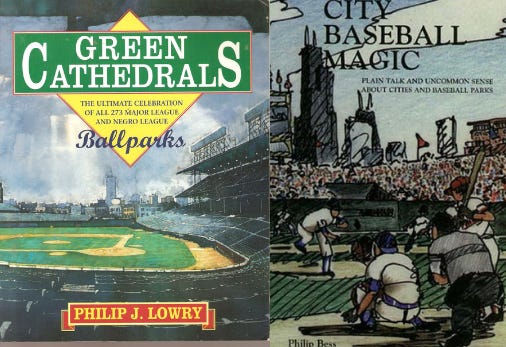
The second decade of the 20th century is when ballparks truly became integrated with their cities, especially Forbes Field in Pittsburgh and Shibe Park in Philadelphia.
Shibe, the home of the Athletics and Phillies, embodied these “jewel boxes” perfectly:
“Now, more than forty years after its demolition, it is still the building-ness of Shibe that impresses. It was, more than any ballpark before it, a statement about the role of the ballpark as a civic building, as a public gathering place, and as a civic institution worthy to take its place besides museums, courthouses, and concert halls.”
A short time later was what the author calls “the Golden Age” of baseball architecture, as Ebbets Field in Brooklyn, Fenway Park in Boston and what eventually became Wrigley Field in Chicago opened in neighborhoods throbbing with life, and in some cases giving fans a viewing perch from adjoining rowhouses.
At the end of this wave came the opening of Yankee Stadium in 1923, timed for the sensation that Babe Ruth had become, as the team broke away from sharing the Polo Grounds with the Giants in Manhattan.
The new palace in the Bronx planted the first seeds of the ballparks to come with a fury after World War II. While a grand stage for the game, Yankee Stadium didn’t have quite the cozy community connection, despite the open vistas beyond the outfield fences.
During the Depression, the new home of the Indians, far away from downtown Cleveland, foreshadowed a future trend further. League Park was intimate and near the city center, but inadequate for the crowds baseball was drawing.
Cleveland Stadium, built near the windswept southern shores of Lake Erie, was one of the first major stadiums in the U.S. financed with public dollars. It was circular, enclosed, chilly and uncomfortable, scotching previous traditions.
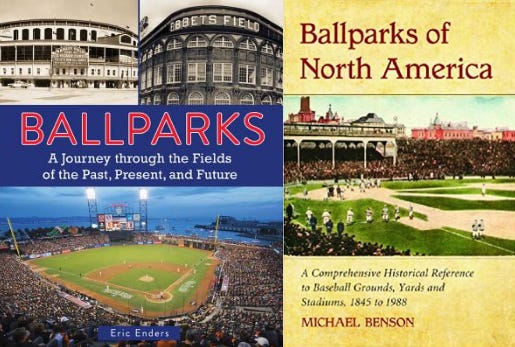
But it set into motion the “concrete doughnuts” of the 1950s and 1960s, the multi-purpose stadiums built for baseball and professional football, which was on the rise and threatening the pastime.
The ugliness and sterility of Riverfront, Three Rivers, the Vet, the Astrodome and others were countered only by a few new gems, namely Dodger Stadium in Los Angeles. Walter O’Malley abandoned efforts to stay in Brooklyn, and get the city to pay the freight— even after hiring the noted architect Norman Bel Geddes to design what would have been the first retracted-roof field—because he couldn’t swing the real-estate transactions needed for a new site.
Instead, he played ball with the real-estate big-boys of southern California, who displaced Latino residents of the Chavez Ravine community to build what Goldberger cites as a new concept in baseball park ideology:
“O’Malley, like Walt Disney, wanted to create a public experience in the city of private experiences, to expand the notion of an attractive public realm in a city notoriously short on public space.”
It would be another 30 years after Dodger Stadium opened, in 1992, that a modernized throwback to this idea came along that changed ballparks forever: Camden Yards in Baltimore.
A whole chapter is devoted to the Orioles hierarchy and the architects who envisioned a complete integration with a downtrodden community that suddenly became the hub of a revitalized urban core.
“A triumph of balance” inspired yet another generation of baseball-only facilities that by now were being funded by taxpayers, quite often without a vote by elected bodies, but sold as the civic assets team owners and city leaders lauded.
Jacobs Field in Cleveland, PNC Park in Pittsburgh, AT & T Park in San Francisco and a new Busch Stadium in St. Louis were among the new bellwethers—intimate, close to the urban center, walkable for fans and beneficial to nearby restaurants, hotels and amusements.
But those amenities were also in demand in the outer edges of cities, and increasingly, suburbs. Miller Park in Milwaukee, a new Yankee Stadium next to the original and Marlins Park on the site of the Orange Bowl in Miami were entities unto themselves, at times totally walled off from their communities by architectural design.
When the Atlanta Braves left downtown after 50 years for the nearby suburbs—a few miles from me—SunTrust Park sparked a community of new development, bolstered by an adjacent mixed-use commercial complex built by the team. The Battery contains restaurants, bars and other shops that are open year-round, and that formulates the early-21st century facility tailored to truly upscale tastes and expectations:
“It is a bubble, and like all such bubbles, it has a superficial appeal, but it is disingenuous to claim that it represents something truly urban: it is just too clean and neat for that. SunTrust is a mallpark as much as a ballpark.”
Whether you think that’s an insult or not, SunTrust—now called Truist Park, after a bank merger—is what Goldberger calls “the most significant development in ballpark design since Camden Yards.”
It’s too soon to judge whether the new Global Life park, located in the vast suburban netherworld between Dallas and Fort Worth, will hint at something new.
These luxurious monstrosities are unlikely to become the saviors for America’s contemporary cities, despite the constant tug of nostalgia.
No matter where ballparks are located, or how fans get to them, or the specifics of the non-baseball fare served up to lure them, Goldberger sets aside sentiment to observe what they have represented over so many decades and still do today:
“They are doing nothing that is not consistent with the history of the game, since the baseball park has been for more than a neutral venue for sport.”
For further reading:
“Take Time for Paradise,” A. Bartlett Giamatti
“Green Cathedrals,” Philip J. Lowry
“City Baseball Magic,” Philip Bess
“Ballparks,” Eric Enders
“Ballparks of North America,” Michael Benson
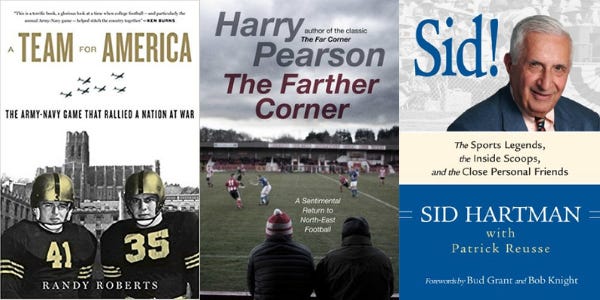
A Few Good Reads
Add Fred Lynn to the list of former big-leaguers who’ve become disenchanted with sabermetrics in baseball, especially the emphasis on the long ball:
“We knew how to score a run without a home run. We did the little things really well. These are the things that were drilled into us as kids. I don’t think the players of today even think about this. They’re so concerned about launch angle; that used to be called an uppercut, by the way. And then exit velocity — What does that really mean? Who cares? Did you get a hit when you hit it hard?”
How a rat played a role in Carlton Fisk’s iconic home run in the 1975 World Series—how time flies;
That World Series was the first Thomas Boswell covered for the The Washington Post, and the current Rays-Dodgers tussle is the first he’s missed in those intervening 44 years. He writes that it was his choice not to attend, and even at the age of 72, knowing he’s at a higher risk for COVID-19, “I still hated making that call;”
After some initial rough spots that included postponements and COVID outbreaks with the Marlins and Cardinals, the Major League Baseball post-season has been relatively uneventful, with no virus-related setbacks. What transpires next year, the last before the current collective-bargaining agreement expires, may be more uncertain;
On the other hand, a new World Cup skiing season in Europe is already ramping up concerns about the international travel and big gatherings that are an integral part of the tour;
More than a century ago, women began turning out at baseball parks in vigorous lobbying for suffrage, and their supporters included George Creel, a former newspaperman who would become President Woodrow Wilson’s chief propagandist during World War I;
For the first time since World War II, the Army-Navy football game will be played on campus, after continuing COVID-19 restrictions ruled out Philadelphia. Instead, the game will take place at Michie Stadium, Army’s home field in West Point, N.Y. That’s where the 1943 game took place, the year after Navy was the host in Annapolis in 1942. The following year, right before the Battle of the Bulge, the Cadets and Midshipmen slugged it out in a No. 1 vs. No. 2 epic, the subject of the 2012 book “A Team for America” by sports historian Randy Roberts;
A longtime fan of Newcastle United has soured on big-time English soccer and confesses his appreciation for the Northern League amateur ranks, the subject of Harry Pearson’s newly published “The Farther Corner,” a followup to “The Far Corner,” which captured the 1993-94 season, including Kevin Keegan being tapped to manage the Magpies;
The pro hockey world was stunned this week by the announcement that longtime play-by-play announcer Mike “Doc” Emrick is retiring, after 47 years. At the age of 74, his recent sign-off after the Tampa Bay Lightning won the Stanley Cup was from a specially-constructed set-up at his home, which he admitted was far from ideal;
It’s been 25 years since Travis Roy, a promising star hockey player at Boston University, became paralyzed from the neck down after being crunched against the boards in a game. While admitting to feeling anguish and despair at times, he’s also inspiring others who’ve suffered spinal cord injuries through his own foundation;
The Pennsylvania House of Representatives has passed a resolution urging the International Olympic Committee to regard native son Jim Thorpe as the sole champion of the pentathlon and decathlon at the 1912 Stockholm Games. It’s the latest move to recognize him exclusively in the official record books. He was stripped of the titles for having been paid for playing semi-pro baseball. The long lobbying effort initially resulted in the IOC returning the medals to Thorpe’s family in 1983, but they want his name to stand alone;
The first Australian Football League Grand Final played outside Melbourne and at night was a rousing coronation for the Richmond Tigers, who trounced the Geelong Cats 81-50 for their third premiership in four seasons. Billed a “grand final like no other,” The Age columnist Greg Baum writes about the spectacle at the Gabba in Brisbane:
“May there never be another like it. That's not to say it never can or will be staged outside Melbourne again. It is not to say that we ought to resign ourselves to night deciders. But it is to pray that it won't be under these grim circumstances again.”
Passings
Sid Hartman, 100, covered sports for the Minneapolis Star-Tribune and other newspapers since 1944, with more than 21,000 bylines to his name. His last was published on Sunday, the day he died, expressing some optimism for the lowly Vikings, who then were dispatched by the previously winless Falcons.
While his life was wedded to newspapers from the time he sold various Minneapolis papers as a boy, Hartman was more than a newspaperman. In the years after World War II, he served as an informal general manager for the Minneapolis Lakers in the early days of professional basketball, playing a role in putting together the NBA’s first dynasty.
Those were the days when some newspaper sports writers were power brokers within their communities. The Twin Cities lost the Lakers to Los Angeles in 1960, then landed baseball (Twins) and football (Vikings) teams soon after.
Hartman, who also did radio work, was close to the management of Minneapolis pro and college sports teams for decades, especially Vikings coach Bud Grant.
Along the way, his incorrigible persona became admired, as his acts of generosity and status as a grandfather resonated in his profession and the larger Minneapolis-St. Paul community.
Here’s an unpaywalled retrospective on Hartman when he was 97, around the time his legendary gruffness had faded a bit, due to a broken hip that made it hard for him to brush past other reporters.
By then, Hartman had become such a legend that not even the likes of Prince, another famous Minnesota son, could eclipse him in a memorable encounter.
Hartman’s son Chad, who followed him into sports media, said his father didn’t die of COVID-related reasons:
“But COVID took away the enjoyment from his life by making him stay home. It took away the chance to see the people he liked. It took away his zest, not being able to go four, five different places every day and to laugh, to get on people and have them get on him.”
Hartman’s family had a private service for him this week.
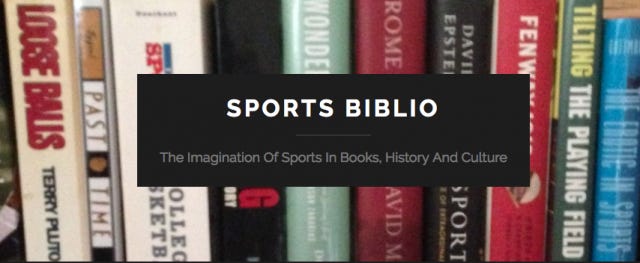
The Sports Biblio Reader e-mail newsletter is delivered on Sunday. You can subscribe here and search recent archives. The full archives for Sports Biblio Digest can be found here. This is issue No. 222, published Oct. 25, 2020.
I’d love to hear what you think about Sports Biblio. Send feedback, suggestions, book recommendations, review copies, newsletter items and interview requests to Wendy Parker at sportsbiblio@gmail.com.
Sports Biblio is an affiliate of Bookshop, an online book retailer, and receives a small commission for books sold via this newsletter. Bookshop donates some its proceeds to independent bookstores across the U.S., so when you shop here you’re supporting a small business in your community.



